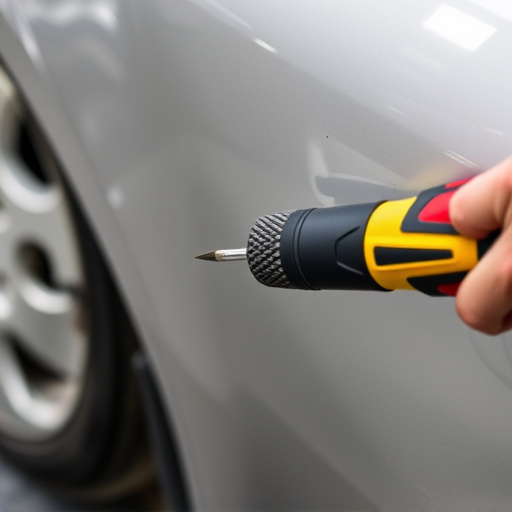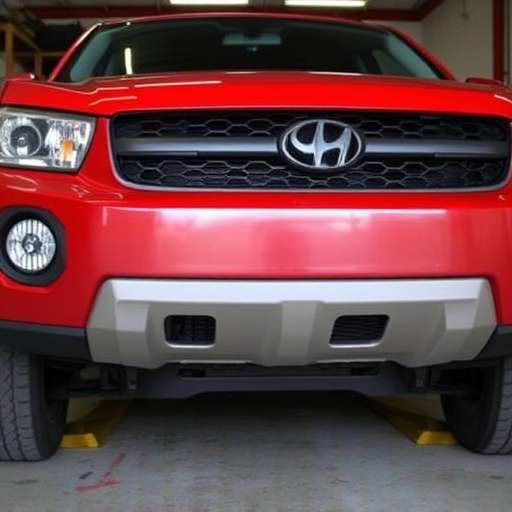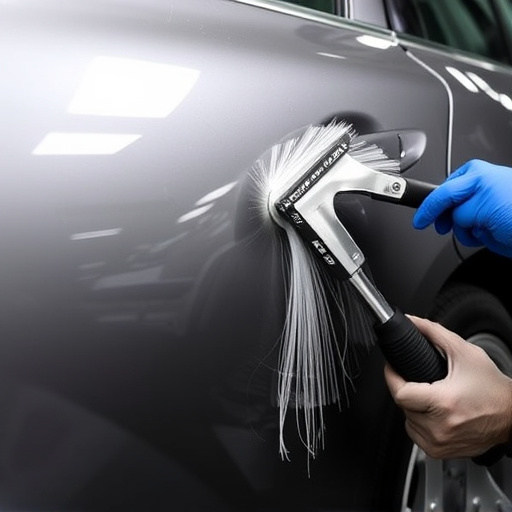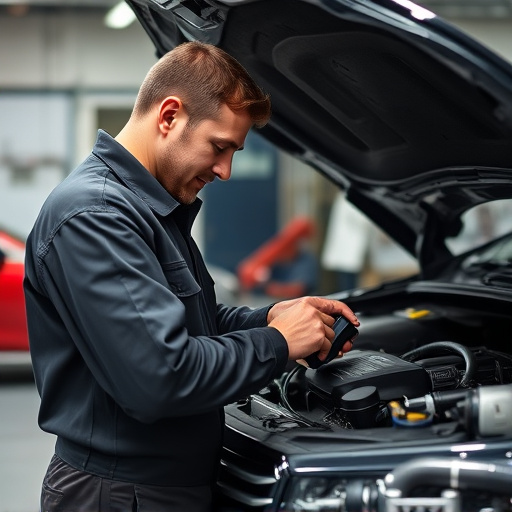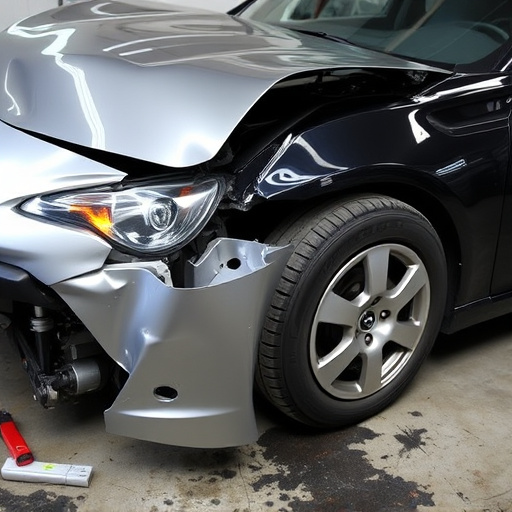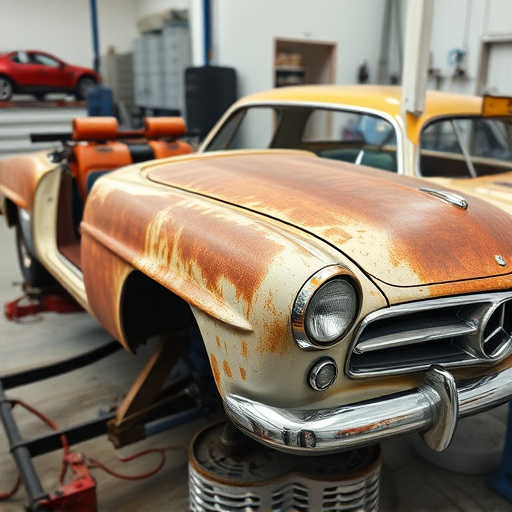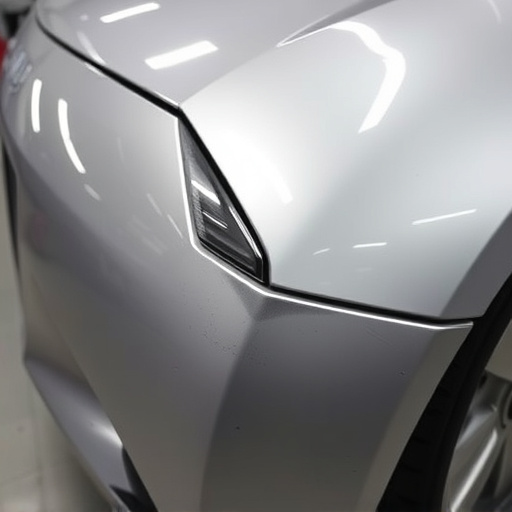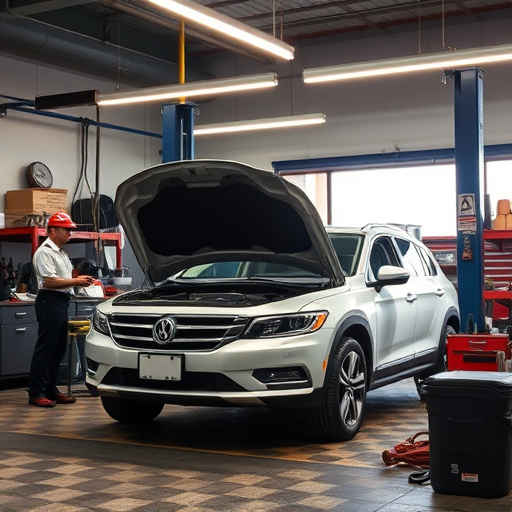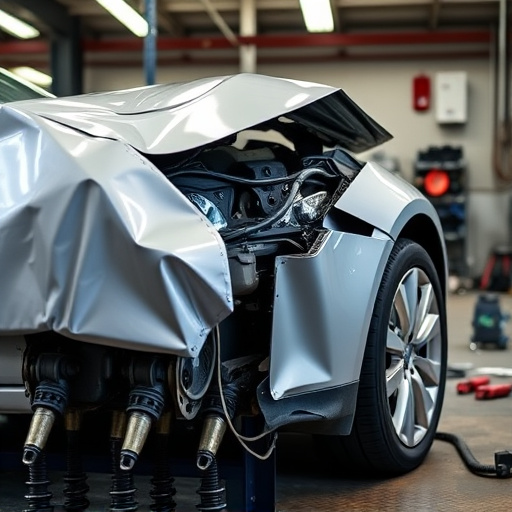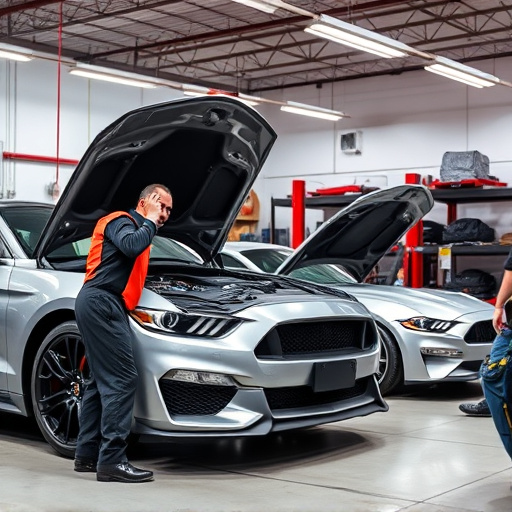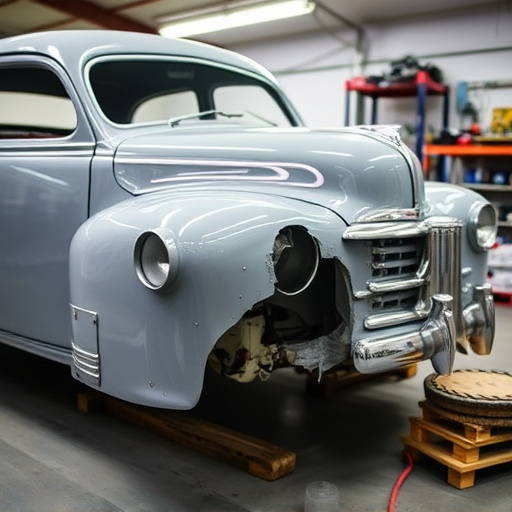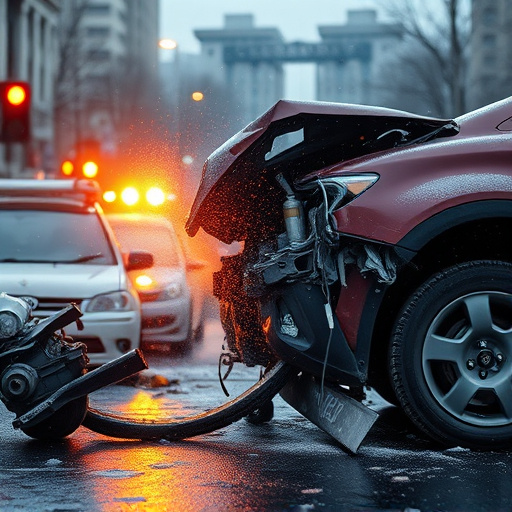Dog leg repair, a crucial auto body process, has evolved with digital technology, enhancing precision and efficiency. Advanced tools like laser measurements and digital imaging ensure accurate repairs, improving structural integrity and aesthetics. Automated systems reduce manual labor and turnaround times, saving costs. Future repairs will be guided by AI and robot-assisted technologies, offering superior results, faster times, and increased accessibility for customers.
In the realm of canine care, accurate dog leg repair is paramount for ensuring a pet’s comfort and mobility. Traditionally, this intricate procedure involved manual dexterity, yet technological advancements are revolutionizing the field. This article explores how innovations in technology are enhancing dog leg repair accuracy, from precision instruments to AI-assisted surgeries. We delve into the future prospects of robot-enabled repairs, highlighting the potential for improved outcomes and efficiency in addressing this critical veterinary need.
- Understanding Dog Leg Repair: The Traditional Approach
- Technology's Role: Enhancing Precision and Efficiency
- Future Prospects: AI and Robot-Assisted Repairs
Understanding Dog Leg Repair: The Traditional Approach
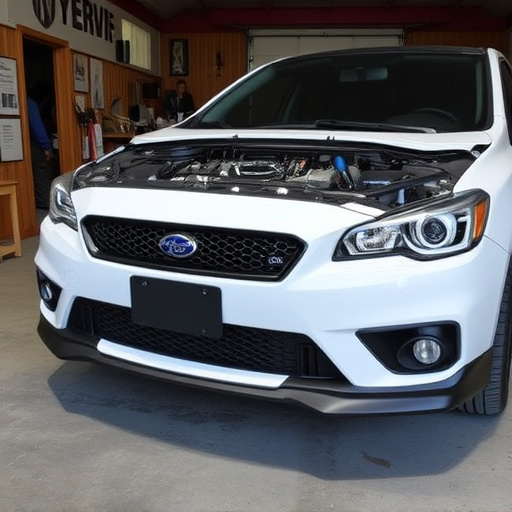
Dog leg repair is a critical aspect of auto body repair, focusing on correcting misalignments in a vehicle’s frame, particularly around the dog leg or knee area—a point where two body panels meet. Traditionally, this process relied heavily on skilled technicians’ manual assessments and adjustments. They would visually inspect the damaged area, use measuring tools, and make precise cuts to realign the metal. While this method was time-tested, it had limitations in terms of consistency and accuracy, especially for complex repairs.
In the realm of vehicle restoration, achieving precision is key to ensuring structural integrity and a seamless finish. The traditional approach often involved multiple iterations, leading to longer repair times and potential hidden costs for body shop services. With advancements in technology, auto body repair has seen a game-changer in the form of digital tools that enhance accuracy and efficiency, making dog leg repair more precise and faster than ever before.
Technology's Role: Enhancing Precision and Efficiency
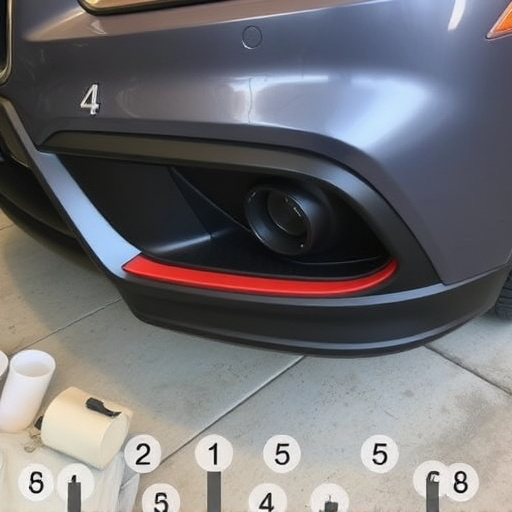
Technology plays a pivotal role in enhancing the precision and efficiency of dog leg repair processes. Advanced tools like laser measurements and digital imaging allow for exact calculations and visual aids, ensuring every adjustment is spot-on. This level of accuracy means repairs are more effective, leading to better structural integrity and aesthetic appeal in vehicles.
Furthermore, technology streamlines the entire repair process. Automated systems for dent removal and car scratch repair, for instance, reduce manual labor and time required. This translates to faster turnaround times and cost savings for both auto body shops and vehicle owners, making efficient dog leg repair a reality in today’s digital age.
Future Prospects: AI and Robot-Assisted Repairs
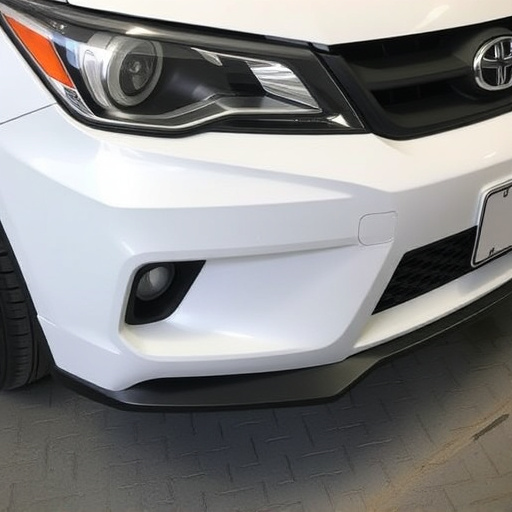
The future of dog leg repair looks promising with the potential of AI and robot-assisted technologies. These advanced systems are poised to revolutionize automotive body shops by enhancing accuracy, speed, and efficiency. AI algorithms can analyze complex data from vehicle bodywork, including intricate measurements and visual feedback, to guide robots in precise repairs, even for subtle car scratch repair tasks. This not only ensures superior results but also reduces the time required for manual labor-intensive repairs.
With ongoing advancements, robot technicians could soon handle a wide range of dog leg repair scenarios, from minor dents to more severe vehicle bodywork damage. The integration of AI promises a new era of precision and customization in car scratch repair, setting higher standards across the industry. This shift towards automated solutions could make automotive body shops more accessible and efficient while potentially lowering costs for customers.
In conclusion, technology has drastically improved the accuracy and efficiency of dog leg repair procedures. From traditional methods to modern advancements like AI and robot assistance, these innovations ensure precise and timely repairs. As research progresses, we can expect even more sophisticated tools and techniques, further revolutionizing the field of dog leg repair. This ongoing evolution promises better outcomes for canine patients, underscoring the significant role technology plays in enhancing their quality of life.
